Home>Garden Essentials>How To Get Rid Of Weeds In Landscaping
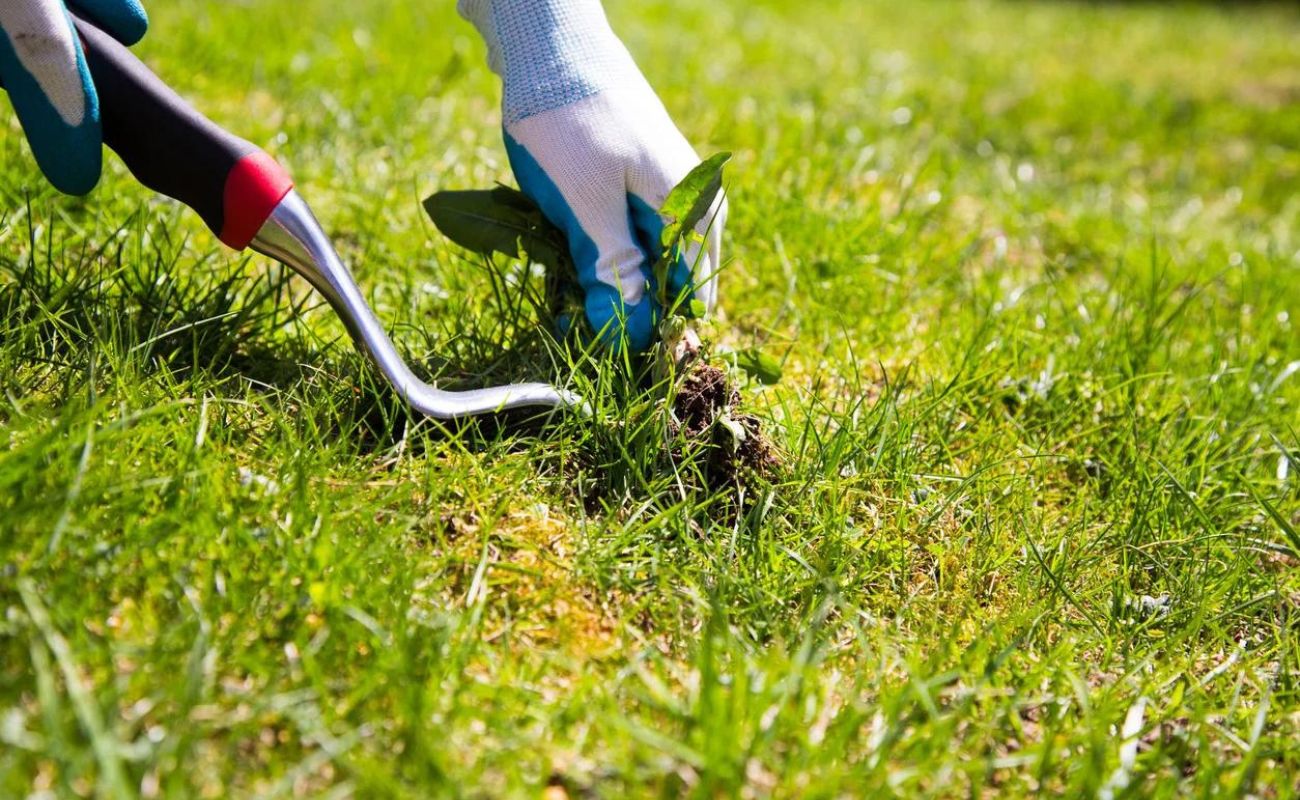

Garden Essentials
How To Get Rid Of Weeds In Landscaping
Modified: August 17, 2024
Learn effective techniques to eliminate unwanted weeds in your garden and maintain a pristine landscaping. Get expert tips and advice on weed control for a beautiful and thriving garden.
(Many of the links in this article redirect to a specific reviewed product. Your purchase of these products through affiliate links helps to generate commission for Storables.com, at no extra cost. Learn more)
Introduction
Welcome to the world of landscaping, where beautiful gardens and manicured lawns come to life. However, as any skilled gardener knows, there is a common adversary that can disrupt the tranquility of a well-tended landscape – weeds. These pesky plants have a knack for finding their way into every nook and cranny, robbing your plants of vital nutrients and robbing you of your sanity. But fear not, for in this article, we will explore the various methods and techniques to effectively get rid of weeds and maintain a weed-free paradise in your landscaping.
To properly combat weeds, it’s important to first understand the different types of weeds you may encounter in your landscaping endeavors. Weeds can be classified into three main categories: annual weeds, perennial weeds, and biennial weeds. Annual weeds complete their life cycle within one year, while perennial weeds persist year after year, often regenerating from their root systems. Biennial weeds have a two-year life cycle, germinating and establishing in the first year, and then flowering and producing seeds in the second year.
Now, you may wonder why weeds are such a relentless problem in landscaping. Well, weeds are not only unsightly but can also compete with your desired plants for essential nutrients, water, and sunlight. Their rapid growth and spread can quickly overtake your carefully planned garden beds and lawns, making it difficult for your plants to thrive. Additionally, some types of weeds can release chemicals that inhibit the growth of nearby plants, further worsening the situation.
Preventing weed growth is an integral part of maintaining a healthy and vibrant landscape. It’s important to start with a solid foundation by preparing the soil before planting. Clear the area of any existing weeds, debris, and rocks, and improve the soil’s structure and fertility. Adding organic matter, such as compost, can help enrich the soil and create a favorable environment for your desired plants while inhibiting weed growth.
Equipping yourself with the right tools and equipment is essential for effective weed control. A few necessities for every gardener’s arsenal include a sturdy garden hoe, hand pruners, a trowel, and a weed puller. These tools will aid in removing weeds manually and maintaining your landscaping with ease.
Key Takeaways:
- Preventing weed growth is essential for a healthy garden. Start with proper soil preparation, use mulch, and regularly inspect for weeds to maintain a weed-free landscape.
- Using the right tools and techniques, such as hand pulling and digging, can effectively control weeds. Combine natural and chemical methods for optimal weed elimination.
Read more: How To Get Rid Of Garden Weeds
Understanding the Different Types of Weeds
Before we delve into the various methods of controlling and eliminating weeds in landscaping, it’s important to have a good understanding of the different types of weeds you may encounter. By knowing the characteristics of each type, you’ll be better equipped to tackle them effectively.
1. Annual Weeds: Annual weeds are plants that complete their life cycle within one year. They grow from seeds, produce flowers and seeds, and then die off, leaving behind a new generation of seeds for the next year. Examples of common annual weeds include crabgrass, chickweed, and pigweed. These weeds typically spread by dispersing their seeds through wind, animals, or human activity.
2. Perennial Weeds: Perennial weeds are the persistent ones that come back year after year. They have strong root systems that allow them to survive harsh conditions and regenerate new growth. Examples of perennial weeds include dandelions, bindweeds, and Canada thistles. They can be particularly challenging to eliminate because simply pulling them out may not be enough to prevent regrowth.
3. Biennial Weeds: Biennial weeds have a two-year life cycle. In their first year, they grow vegetatively, establishing a strong root system. In the second year, they produce flowers and seeds before dying off. Examples of biennial weeds include mullein, teasel, and burdock. These weeds often require a long-term approach to control, as their seeds can remain dormant in the soil for extended periods, waiting for the right conditions to germinate.
4. Grass-Like Weeds: Grass-like weeds, such as annual bluegrass and yellow nutsedge, resemble grass but are actually weeds that can invade your lawn or garden beds. They often spread through underground stems called rhizomes or produce numerous seeds. Controlling grass-like weeds requires specific targeted methods to prevent them from overtaking your desired grass or plants.
Each type of weed has its own growth habits and reproductive strategies, making it important to identify and understand the specific weeds present in your landscape. By recognizing their characteristics, you can choose the most effective methods and tools to control and eliminate them.
Next, we will explore why weeds can become such a problematic issue in landscaping and the importance of effectively managing them to maintain a healthy and thriving landscape.
Why Weeds Are Problematic in Landscaping
Weeds may seem like innocent little plants, but they can cause significant problems in your landscaping if left unchecked. Here are some reasons why weeds are problematic and why it’s crucial to manage them effectively:
1. Competition for Resources: Weeds are notorious for competing with desirable plants for essential resources such as nutrients, water, and sunlight. They have a remarkable ability to quickly establish themselves and spread, often outcompeting your carefully cultivated plants. As a result, your desired plants may suffer from stunted growth, reduced yield, or even die off due to the limited resources available.
2. Aesthetic Concerns: Weeds can quickly turn a beautiful landscape into a messy and unkempt area. Their fast growth and sprawling nature can create a visually unappealing sight, detracting from the overall attractiveness of your garden or lawn. Weeds can ruin the meticulous design and ruin the aesthetic appeal you have worked hard to achieve.
3. Seed Dispersal: Many weed species produce a vast number of seeds, which can be easily dispersed by wind, animals, or human activity. These seeds can remain dormant in the soil for years, waiting for the right conditions to germinate and start a new wave of weed growth. If weeds are not properly managed and controlled, they can quickly multiply and become a persistent problem in your landscaping.
4. Pest and Disease Carriers: Weeds can act as hosts for pests and diseases that can harm your desired plants. They provide shelter and nourishment for insects, such as aphids, mealybugs, and mites, which can then spread to your garden plants. Weeds can also harbor plant viruses and fungal diseases, increasing the risk of infection and damage to your landscape plants.
5. Impact on Biodiversity: Invasive weeds have the ability to outcompete and displace native plant species, leading to a decline in biodiversity. This can have negative ecological consequences, as native plants provide food and habitat for local wildlife species. By effectively managing weeds, you can help protect the natural balance and diversity of your landscape.
Overall, weeds pose a variety of problems in landscaping, ranging from direct competition with desirable plants to indirect impacts on aesthetics, biodiversity, and plant health. That’s why it’s crucial to implement proper weed control measures as part of your landscaping maintenance routine. In the next section, we will explore various methods and techniques to prevent and control the growth of weeds in your landscape.
Preventing Weed Growth in Landscaping
Prevention is the key to maintaining a weed-free landscape. By implementing effective strategies to prevent weed growth, you can save yourself time, effort, and frustration down the line. Here are some important tips and techniques to prevent weed growth in your landscaping:
1. Start with Proper Soil Preparation: Before planting, it’s crucial to prepare the soil properly. Clear the area of any existing weeds, debris, rocks, or plant remnants. Loosen the soil and add organic matter, such as compost or well-rotted manure, to improve its structure and fertility. Well-prepared soil provides a healthy foundation for your desired plants and makes it harder for weeds to take hold.
2. Use Mulch: Mulching is a highly effective method for preventing weed growth in garden beds and around trees and shrubs. Apply a layer of organic mulch, such as wood chips, straw, or shredded bark, around your plants. This will help suppress weed germination by blocking sunlight, smothering weed seedlings, and retaining moisture in the soil. Make sure to maintain the mulch layer to a depth of 2-3 inches and replenish it as needed.
3. Install Landscape Fabric: Landscape fabric, also known as weed barrier or weed control fabric, is a synthetic material that acts as a physical barrier to prevent weed growth. It allows water and nutrients to penetrate the soil while blocking sunlight and preventing weed seeds from germinating. Place landscape fabric over the soil before planting, and cut holes or slits to accommodate your desired plants. Secure the fabric with landscape staples or pins.
4. Practice Proper Plant Spacing: Give your plants adequate spacing when planting to minimize competition for resources and allow for proper air circulation. Crowded plants provide more shade and create a favorable environment for weed growth. By following proper planting guidelines and giving each plant enough space to grow, you can create conditions that discourage weed establishment.
5. Regularly Monitor and Remove Weeds: Keep a vigilant eye on your landscape and regularly inspect for any weed growth. As soon as you spot weeds, promptly remove them before they have a chance to spread and produce seeds. Hand-pulling or using a garden hoe can be effective for small-scale weed removal. Be sure to remove the entire weed, including the roots, to prevent regrowth.
6. Avoid Overwatering: Overwatering can create moist conditions that are favorable for weed growth, as well as cause shallow root development in your desired plants. Water deeply and infrequently, ensuring that the soil has a chance to dry out between watering sessions. This will help discourage weed germination and promote healthier root growth for your plants.
By following these prevention techniques, you can significantly reduce the occurrence of weeds in your landscaping. However, even with the best preventive measures, some weeds may still manage to find their way into your landscape. In such cases, it helps to be equipped with the right tools and know the proper techniques for weed control and removal, which we will explore in the next sections.
Essential Tools and Equipment for Weed Control
When it comes to effectively controlling weeds in your landscaping, having the right tools and equipment can make all the difference. Here are some of the essential tools you should have in your arsenal for successful weed control:
1. Garden Hoe: A garden hoe is a versatile tool that can be used for both cultivating the soil and removing weeds. Choose a sturdy hoe with a sharp and angled blade. This tool is particularly useful for cutting through the roots of weeds and loosening the soil around them, making it easier to remove them from the ground.
2. Hand Pruners: Hand pruners, also known as secateurs, are indispensable for removing small, delicate weeds, or for selectively pruning unwanted growth. Look for a pair of pruners with a bypass cutting mechanism for clean and precise cuts. They can be used to trim back invasive weeds or snip off unwanted seed heads to prevent further spreading.
3. Trowel: A trowel is a small handheld tool with a flat and pointed blade, which is perfect for digging out individual weeds or removing them from confined spaces, such as between pavers or in tight corners. Select a trowel with a sturdy handle and a durable, rust-resistant blade.
4. Weed Puller: A weed puller, sometimes called a weed extractor or dandelion digger, is specifically designed to remove weeds with taproots or deep root systems. This tool has a long handle and a forked or notched end to grip the weed at the base and extract it from the ground. Using a weed puller can help prevent the regrowth of weeds by ensuring the entire root is removed.
5. Weed Torch: For larger areas or stubborn weeds, a weed torch can be a useful tool. This propane-powered device uses intense heat to kill weeds on contact. Simply aim the flame at the weed for a few seconds until it withers and dies. However, exercise caution when using a weed torch to avoid damaging surrounding plants or starting fires. Follow the manufacturer’s safety instructions carefully.
6. Weed Sprayer: A weed sprayer, such as a handheld or backpack sprayer, is a convenient tool for applying herbicides or other weed control solutions to larger areas. Choose a sprayer with adjustable nozzles to control the spray pattern and target weeds precisely. Always read and follow the instructions on herbicide labels to ensure proper usage and safety.
7. Knee Pads or Garden Mat: Weeding often requires getting down close to the ground, which can put a strain on your knees and back. Invest in a comfortable pair of knee pads or use a garden mat to cushion your knees and protect your joints while working on your landscaping.
Having these essential tools and equipment in your gardening toolkit will make weed control more efficient and effective. Remember to use them with care and follow the appropriate techniques for each method of weed removal. In the next sections, we will explore natural and chemical methods of weed control to suit your specific needs and preferences.
Read more: How To Get Rid Of Weeds On A Patio
Natural and Chemical Weed Control Methods
When it comes to weed control in landscaping, you have the option to choose between natural or chemical methods. Natural weed control methods rely on organic, non-toxic alternatives, while chemical methods involve the use of herbicides to eliminate weeds. Let’s explore both options:
Natural Weed Control Methods:
1. Hand Pulling and Digging: For small-scale weed control, hand pulling and digging remain one of the most effective natural methods. Put on a pair of gloves and manually remove weeds from the roots, ensuring that you extract the entire plant. This method works best when the soil is moist, as it makes it easier to pull out the weeds with their roots intact.
2. Mulching: Applying organic mulch, such as wood chips, straw, or compost, is not only a preventive measure but also a natural weed control method. Mulch acts as a physical barrier, blocking sunlight and preventing weed seeds from germinating. It also helps retain moisture and suppress weed growth. Ensure that the mulch layer is thick enough, around 2-3 inches, to effectively smother weeds.
3. Landscape Fabric: Using landscape fabric is another natural method for weed control. The fabric is placed over the soil before planting and acts as a physical barrier, preventing weed growth while allowing water and nutrients to penetrate. Cut holes or slits in the fabric to accommodate your desired plants. Landscape fabric is particularly useful in areas where you want to prevent any weed growth, such as under pathways or decorative rock beds.
4. Smothering with Cardboard or Newspaper: This method involves covering the area with layers of cardboard or newspaper, followed by a layer of mulch or soil. The cardboard or newspaper acts as a barrier, preventing light from reaching the weeds and inhibiting their growth. This technique is effective for suppressing weed growth in large areas, such as in new garden beds or vegetable patches.
Chemical Weed Control Methods:
1. Herbicides: Herbicides are chemical substances specifically designed to kill or inhibit the growth of weeds. They come in various forms, such as sprays, granules, or concentrated solutions. Herbicides can be selective, targeting specific types of weeds, or non-selective, affecting all vegetation. It’s important to carefully read and follow the instructions and safety precautions provided with the specific herbicide you choose.
2. Pre-Emergent Herbicides: Pre-emergent herbicides are applied before weed seeds germinate, forming a barrier that prevents their growth. They are particularly useful in preventing the emergence of annual weeds. It’s essential to apply them at the right time, typically in early spring or fall, before the weeds have a chance to grow.
3. Post-Emergent Herbicides: Post-emergent herbicides are applied after weeds have already emerged. They are effective for killing established weeds. Selective post-emergent herbicides target specific types of weeds, while non-selective herbicides can kill any vegetation they come into contact with. Take care when using non-selective herbicides to avoid damaging your desired plants.
Note: When using herbicides, it’s important to follow the manufacturer’s instructions carefully, wear protective clothing, and prevent drift or overspray onto desired plants. Always consider the potential impact on the environment, wildlife, and water sources when using chemical weed control methods.
Choosing between natural and chemical weed control methods ultimately depends on your specific needs, the scale of weed infestation, and your personal preference. It’s often beneficial to combine different strategies to effectively manage and control weeds in your landscaping. In the next sections, we will explore specific techniques for pulling, digging, and smothering weeds, as well as the use of herbicides for weed elimination.
Regularly pulling weeds by hand is an effective and environmentally friendly way to get rid of weeds in landscaping. Make sure to pull the entire weed, including the roots, to prevent regrowth.
Pulling and Digging out Weeds
When it comes to removing weeds from your landscaping, one of the most effective and straightforward methods is pulling and digging them out. This manual approach allows you to physically extract weeds from the roots, preventing regrowth and reducing the need for chemical interventions. Here are some tips and techniques for pulling and digging out weeds:
1. Timing is Key: It’s essential to tackle weeds when they are young and have not yet developed a robust root system. Younger weeds are generally easier to pull out, as their roots have not yet established deep into the soil. Therefore, regular monitoring and early intervention are crucial to prevent weeds from spreading and becoming more challenging to remove.
2. Moisture Matters: Weeds are easier to pull out when the soil is moist. Consider pulling weeds after a rain shower or watering your garden beforehand to soften the soil. Moist soil makes it easier to grip the weeds at the base and ensure that you remove the entire root system.
3. Use the Right Tools: Depending on the size and type of weeds, different tools may be more appropriate for pulling and digging. For larger weeds or those with taproots, a weed puller or dandelion digger can be useful. These tools have a long handle and a forked or notched end, allowing you to grip the weed at the base and remove it from the ground.
4. Firmly Grip the Weed: When pulling out weeds, ensure that you get a firm grip on the stem or base of the plant. Aim to hold it as close to the ground as possible to avoid breaking the stem and leaving behind a portion that could regrow. Use a gentle twisting motion while pulling to loosen the roots from the soil.
5. Digging Out Persistent Weeds: Some weeds, such as dandelions or thistles, have deep taproots that can make them challenging to remove fully. In such cases, using a garden fork or a narrow trowel can be helpful. Gently insert the fork or trowel next to the weed, angling it to loosen the soil around the root. Then, carefully pry the weed out, applying gentle pressure to release the root from the soil.
6. Dispose of Weeds Properly: After pulling or digging out weeds, it’s crucial to dispose of them properly to prevent reinfestation. Place them in a designated weed compost pile or dispose of them in a green waste bin. Avoid throwing them in your regular compost pile, as some weed seeds may survive and germinate later.
7. Regular Maintenance: Weeding is an ongoing task in landscaping. Regularly check your garden and landscape beds for any new weed growth and promptly pull them out. By staying vigilant and incorporating weeding into your routine maintenance, you can prevent weeds from spreading and becoming a more significant problem.
Pulling and digging out weeds is a labor-intensive but effective method for weed control in your landscaping. Combine this technique with other preventive measures like mulching and proper plant spacing for optimum results. In the next section, we will explore smothering weeds with mulch or landscape fabric as an alternative weed control method.
Smothering Weeds with Mulch or Landscape Fabric
If you’re looking for a natural and effective method to control weeds in your landscaping, smothering them with mulch or landscape fabric can be a game-changer. By creating a barrier that inhibits weed growth and blocks sunlight, you can successfully suppress and prevent weed emergence. Here’s how you can use mulch or landscape fabric to smother weeds:
1. Mulching for Weed Suppression:
Apply a layer of organic mulch, such as wood chips, straw, or shredded bark, to the soil surface around your plants and in your garden beds. The mulch layer should be around 2-3 inches thick for effective weed suppression. Mulch acts as a physical barrier, preventing sunlight from reaching weed seeds and preventing their germination.
Organic mulch also has the added benefit of improving soil moisture retention, regulating soil temperature, and providing nutrients as it decomposes. These benefits contribute to the health and vitality of your desired plants, further crowding out weed growth.
2. Applying Landscape Fabric:
Landscape fabric, also known as weed barrier or weed control fabric, is a synthetic material that can be used to smother weeds effectively. Begin by preparing the soil and removing any existing weeds or debris. Then, lay the landscape fabric over the soil, making sure it covers the entire area where you want to suppress weed growth.
Secure the fabric by anchoring it with landscape staples or pins, ensuring that it lays flat and taut. Cut holes or slits in the fabric to accommodate your desired plants. Make the holes slightly larger than the current size of the plants to allow for growth over time.
Landscape fabric acts as a physical barrier, preventing sunlight penetration and inhibiting weed seed germination. It also allows water and nutrients to pass through to the soil, benefiting your desired plants.
3. Maintaining Mulch or Landscape Fabric:
To maintain the effectiveness of mulch or landscape fabric in smothering weeds, it’s important to follow a few key steps:
– Regularly inspect and remove any weeds that manage to emerge through the mulch or fabric. Promptly pulling them out will prevent them from establishing and spreading.
– Replenish the mulch layer as needed. Over time, organic mulches decompose and break down, reducing their weed-suppressing ability. Adding a fresh layer of mulch annually or as required will ensure ongoing weed control.
– Monitor the landscape fabric for any damage or shifting. Repair or reposition any torn or displaced sections to maintain proper coverage and effectiveness.
Using mulch or landscape fabric to smother weeds is not only an effective weed control method but also provides several benefits for your landscaping, including moisture retention, improved soil health, and enhanced aesthetic appeal.
Remember that while mulch and landscape fabric can significantly reduce weed growth, they are not foolproof solutions. Persistent and stubborn weeds may still find a way to break through. Combine smothering methods with regular maintenance, such as pulling or digging out emerging weeds, to keep your landscaping weed-free.
In the next section, we will explore another approach to weed control: using herbicides to eliminate weeds.
Using Herbicides to Eliminate Weeds
When it comes to eliminating stubborn or widespread weed infestations in your landscaping, herbicides can be a powerful tool. Herbicides are chemical formulations designed to selectively target and control weeds, helping you regain control over your garden or lawn. Here are some important considerations and guidelines for using herbicides effectively:
1. Selecting the Right Herbicide:
- Choose a herbicide that is formulated to target the specific type of weeds you want to eliminate. There are selective herbicides that target specific types of weeds, such as broadleaf weeds or grassy weeds, while non-selective herbicides kill any vegetation they come into contact with.
- Read and follow the instructions on the herbicide label carefully. This includes information on application rates, timing, and any specific precautions or safety measures you need to take.
- Consider using herbicides that are labeled as “pre-emergent” if you want to prevent weed seeds from germinating, or “post-emergent” to target existing weeds.
- Be aware of any potential restrictions or regulations regarding the use of herbicides in your locality. Follow all local laws and guidelines to ensure safe and responsible use.
- When using herbicides, always wear protective clothing, including gloves, long sleeves, and eye protection, to minimize your exposure to the chemicals.
2. Applying Herbicides:
- Apply herbicides on a calm, dry day to prevent drift and ensure the product reaches the target weeds effectively.
- Avoid application near desirable plants, as herbicides can potentially harm them. Shield or cover any plants you want to protect while applying the herbicide.
- Follow the instructions on the herbicide label for the appropriate dilution ratio and application method.
- If using a sprayer, adjust the nozzle to provide a fine mist or spray pattern that directly targets the weeds while minimizing overspray.
- Avoid applying herbicides before rainfall, as it may wash away the product and reduce its effectiveness.
- Keep in mind that some herbicides may have residual effects, meaning they can remain active in the soil for an extended period. Take precautions to prevent contact with desirable plants during the residual period.
3. Post-Herbicide Care:
- Allow sufficient time for herbicides to take effect before implementing any cultivation or planting activities in the treated area.
- Monitor the treated area for any re-growth or new weed emergence. Follow up with spot treatments or manual removal as needed.
- To prevent accidental damage to desirable plants, carefully read the herbicide label for any specific instructions or restrictions regarding reseeding or transplanting after herbicide application.
It’s important to note that while herbicides can be effective in eliminating weeds, they should be used as a part of an integrated weed management approach. Combining other methods such as pulling, digging, or smothering with mulch can help reduce the reliance on herbicides and minimize their environmental impact.
Always remember that herbicides should be used responsibly and in accordance with local regulations. If you have concerns or are unsure about using herbicides, consult with a knowledgeable professional to guide you in selecting and applying the appropriate herbicides for your specific needs.
In the next section, we will discuss the importance of ongoing weed management and maintenance strategies to maintain a weed-free landscape.
Read more: How To Get Rid Of Weeds On Grass
Maintaining a Weed-Free Landscape
Keeping your landscape free of weeds is an ongoing process that requires regular maintenance and proactive strategies. By implementing effective weed management practices, you can maintain a beautiful, healthy, and weed-free landscape. Here are some essential tips to help you maintain a weed-free landscape:
1. Regular Inspections: Schedule regular inspections of your landscape to identify any emerging weeds. Early detection allows you to address weed growth promptly, preventing them from spreading and becoming more challenging to control. Stay vigilant and keep an eye out for any new weed seedlings or mature weeds that may have escaped previous weed control measures.
2. Hand Pulling and Digging: Continuously remove any weeds that emerge, pulling them out by hand or using suitable tools like a weed puller or garden fork. Be sure to remove the entire weed, including the roots, to prevent regrowth. Regularly cultivating and loosening the soil can also disrupt weed growth and make it easier to remove them.
3. Mulching: Maintain a consistent layer of mulch in your garden beds to suppress weed growth and conserve moisture. Over time, the mulch may break down or become thin, so replenish it as needed to ensure weed suppression. Monitor for any gaps in the mulch coverage and add additional mulch to prevent weed seeds from finding bare soil to germinate.
4. Landscape Fabric Maintenance: If you’re using landscape fabric, inspect it regularly to ensure it remains intact and adequately covers the desired area. Repair any tears or shifts in the fabric promptly. As plants grow, adjust the fabric or cut additional holes to accommodate their expanding size. This ensures that weed seeds cannot access the soil and germinate.
5. Proper Watering and Fertilization: Maintain a healthy environment for your desired plants by providing them with appropriate watering and fertilization. Healthy, well-nourished plants are better equipped to outcompete weeds for resources and can establish stronger root systems that will discourage weed growth.
6. Regular Cultivation: Periodically cultivate the soil in your garden beds or around shrubs and trees to disrupt weed growth and prevent the buildup of weed seeds in the soil. Use a hand cultivator or a hoe to gently loosen the top layer of soil, being careful not to disturb the roots of your desired plants.
7. Weed Barrier Maintenance: If you’ve installed landscape fabric or other weed barriers, inspect them regularly for any signs of weeds poking through. Hand pull or dig out any weeds that manage to breach the barrier, and make necessary repairs to maintain its effectiveness.
8. Integrated Pest Management (IPM): Implement an integrated pest management approach to address any pest issues that may contribute to weed growth. Some pests, such as slugs or aphids, can damage plants and create openings for weeds to take hold. By effectively managing pests, you can prevent further weed invasions.
9. Education and Continued Learning: Stay informed about the latest weed control techniques and best practices. Attend gardening workshops or consult with local gardening experts to learn about innovative strategies and new products that can aid in weed management. Regularly update your knowledge on weed identification and control methods to improve your effectiveness at maintaining a weed-free landscape.
Remember, persistence and consistency are key when it comes to maintaining a weed-free landscape. By incorporating these practices into your regular gardening routine, you can enjoy a beautiful and thriving landscape with minimal weed disruption.
Final Word:
As a gardener, keeping your landscape free of weeds is an ongoing commitment. By combining preventive measures, such as proper soil preparation, mulching, and landscape fabric, with proactive weed control methods like hand pulling, digging, and, if necessary, the careful use of herbicides, you can maintain a weed-free environment. Regular inspections, cultivation, and ongoing maintenance are essential for long-term success. With patience and dedication, you can achieve a lush, visually appealing landscape that allows your desired plants to flourish while keeping pesky weeds at bay.
Remember to stay informed about local regulations and guidelines for herbicide use, and always follow the manufacturer’s instructions carefully. Enjoy the process of tending to your garden, and revel in the beauty and tranquility of a well-maintained, weed-free landscape.
Conclusion
Maintaining a weed-free landscape requires a combination of preventive measures, proactive weed control methods, and ongoing maintenance. By implementing a holistic approach to weed management, you can create a beautiful and healthy landscape that allows your desired plants to thrive while minimizing weed disruptions. Remember these key points:
First, understanding the different types of weeds and their characteristics is essential for effective weed control. This knowledge enables you to choose the appropriate methods and tools for eradication. Additionally, recognizing why weeds are problematic in landscaping helps raise awareness of the importance of controlling them.
Prevention is key in maintaining a weed-free landscape. By starting with proper soil preparation, using mulch or landscape fabric to smother weed growth, and practicing proper plant spacing, you can create an environment that discourages weed establishment and growth. Regular inspections, hand pulling, and digging are crucial for addressing weeds promptly and preventing them from spreading.
Natural methods, such as mulching and smothering, provide effective weed control while minimizing environmental impact. However, in cases of stubborn and widespread infestations, carefully using herbicides can be a powerful tool for weed elimination. Always follow label instructions, wear protective gear, and consider the potential consequences on the environment and desired plants.
Maintaining a weed-free landscape requires ongoing care and attention. Regular inspections, cultivation, and proper watering and fertilization practices contribute to weed prevention. Stay informed about the latest weed control techniques and best practices, and continuously update your knowledge to improve your effectiveness.
In conclusion, maintaining a weed-free landscape takes time, effort, and a combination of strategies. By being proactive, consistent, and well-informed, you can create a beautiful and healthy outdoor space that showcases your desired plants and minimizes the intrusion of weeds. Enjoy the process of nurturing your garden and revel in the rewards of a thriving, weed-free landscape.
Frequently Asked Questions about How To Get Rid Of Weeds In Landscaping
Was this page helpful?
At Storables.com, we guarantee accurate and reliable information. Our content, validated by Expert Board Contributors, is crafted following stringent Editorial Policies. We're committed to providing you with well-researched, expert-backed insights for all your informational needs.
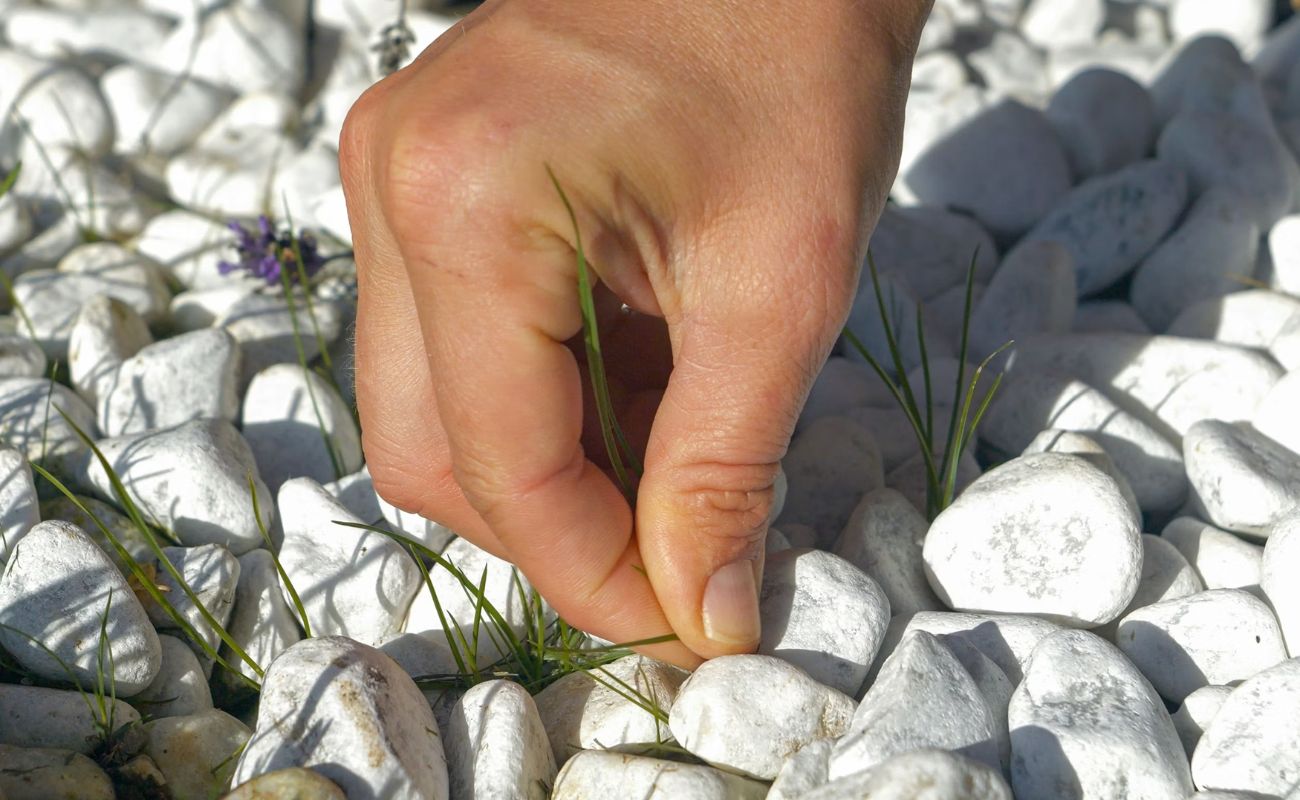
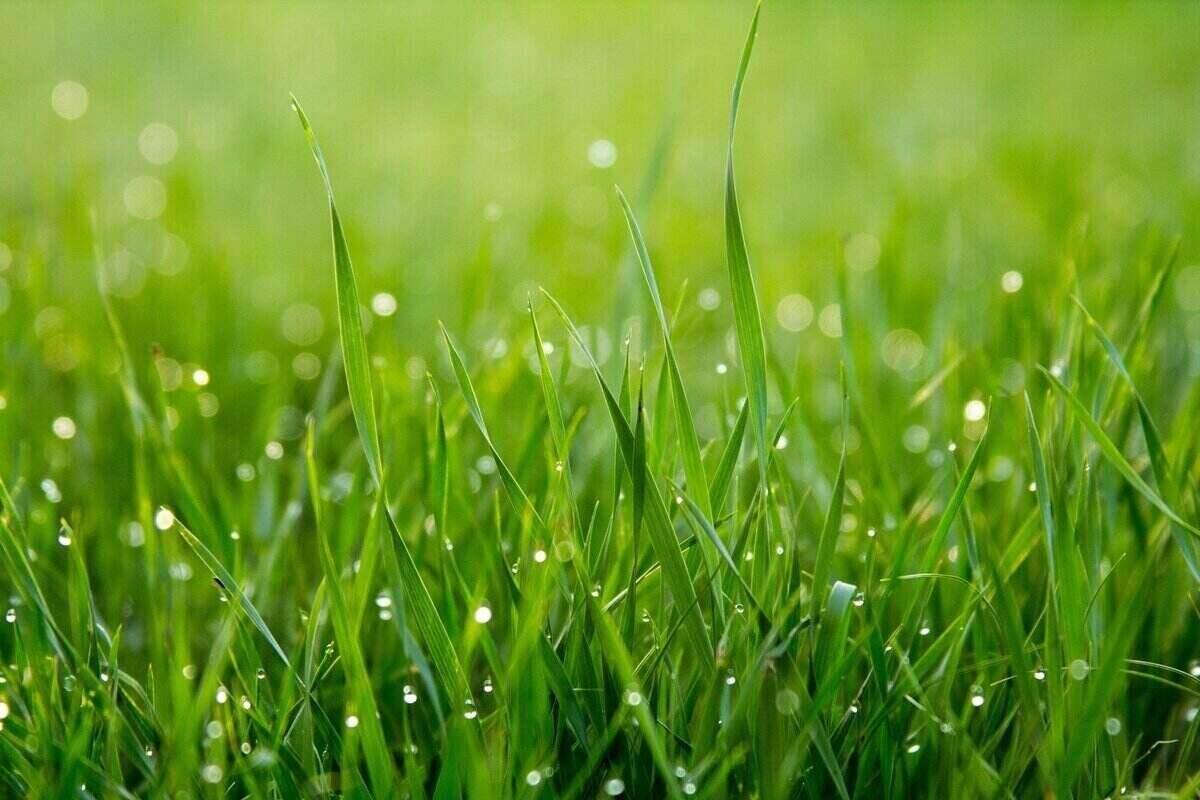
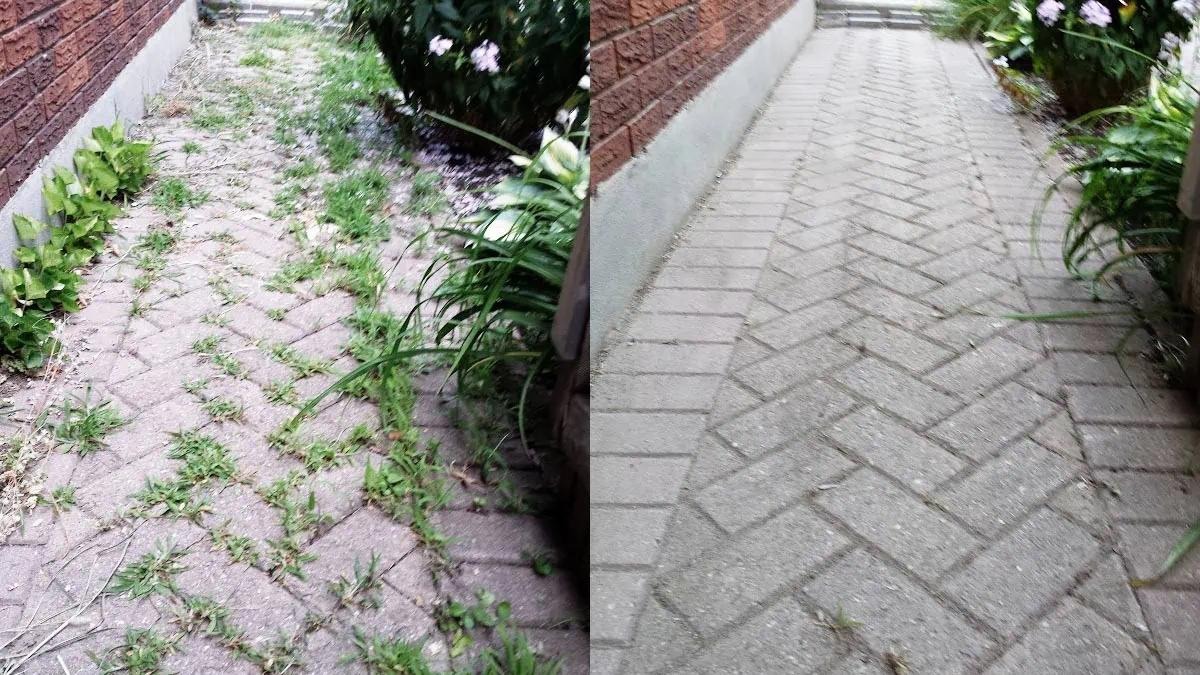
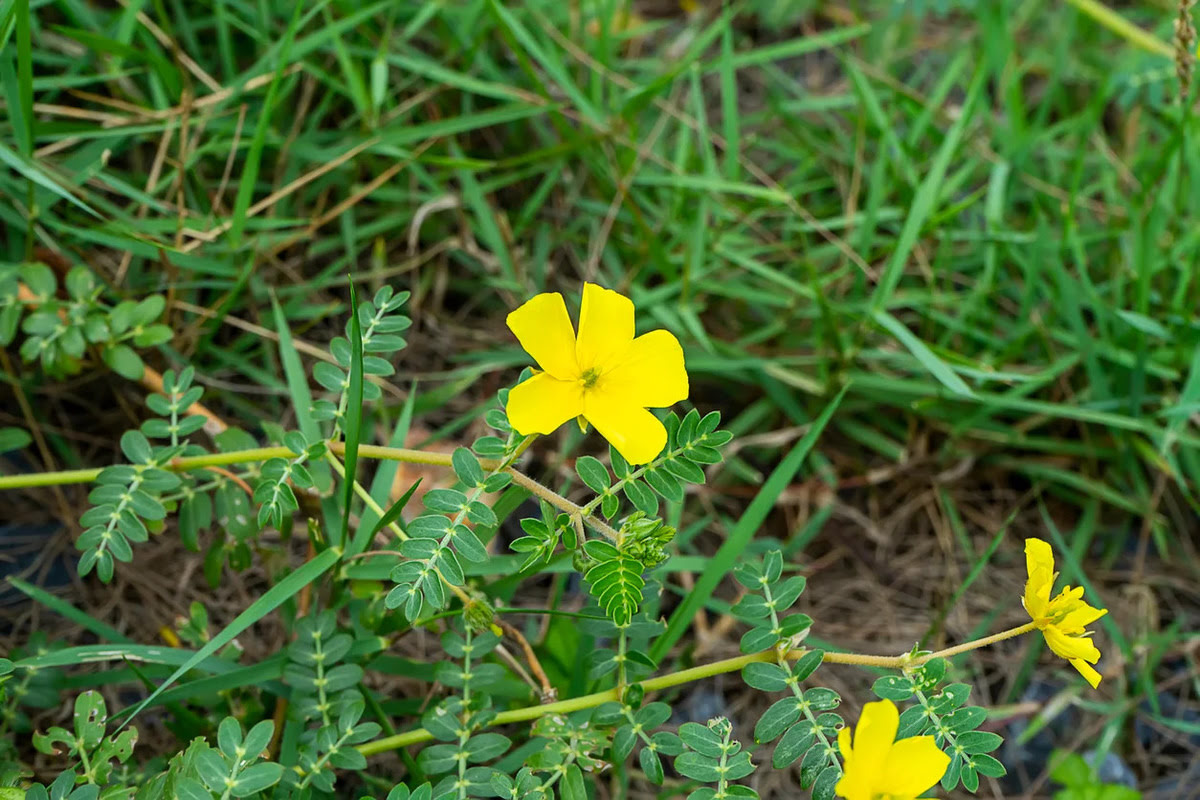
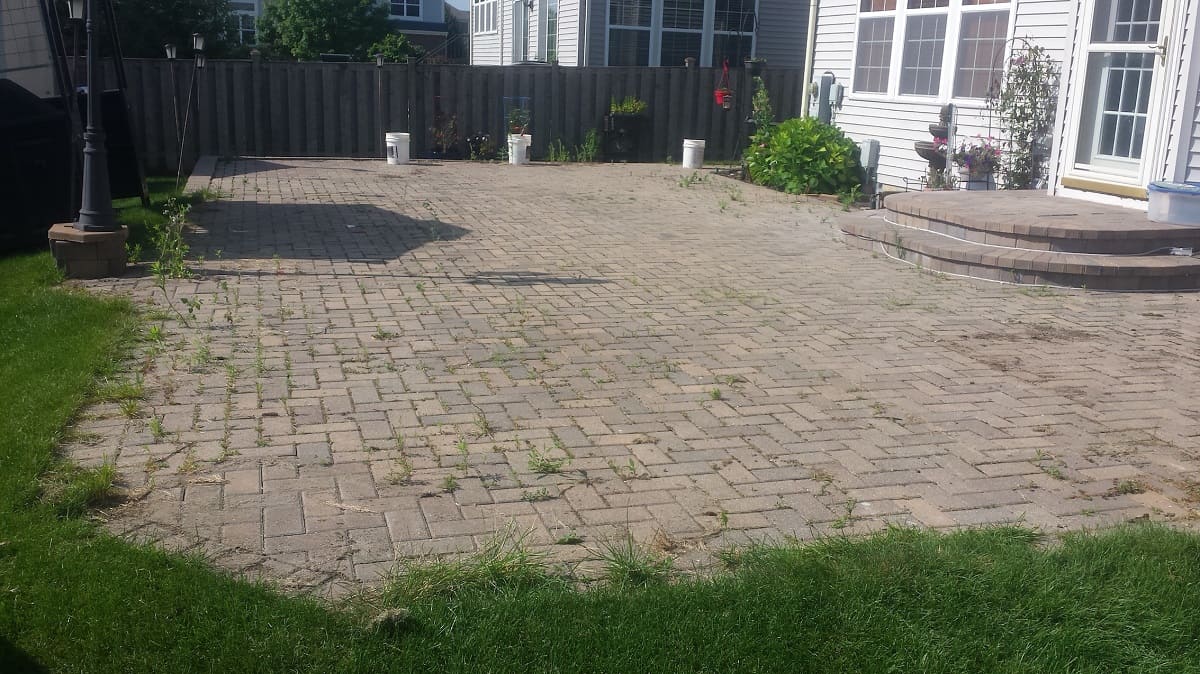

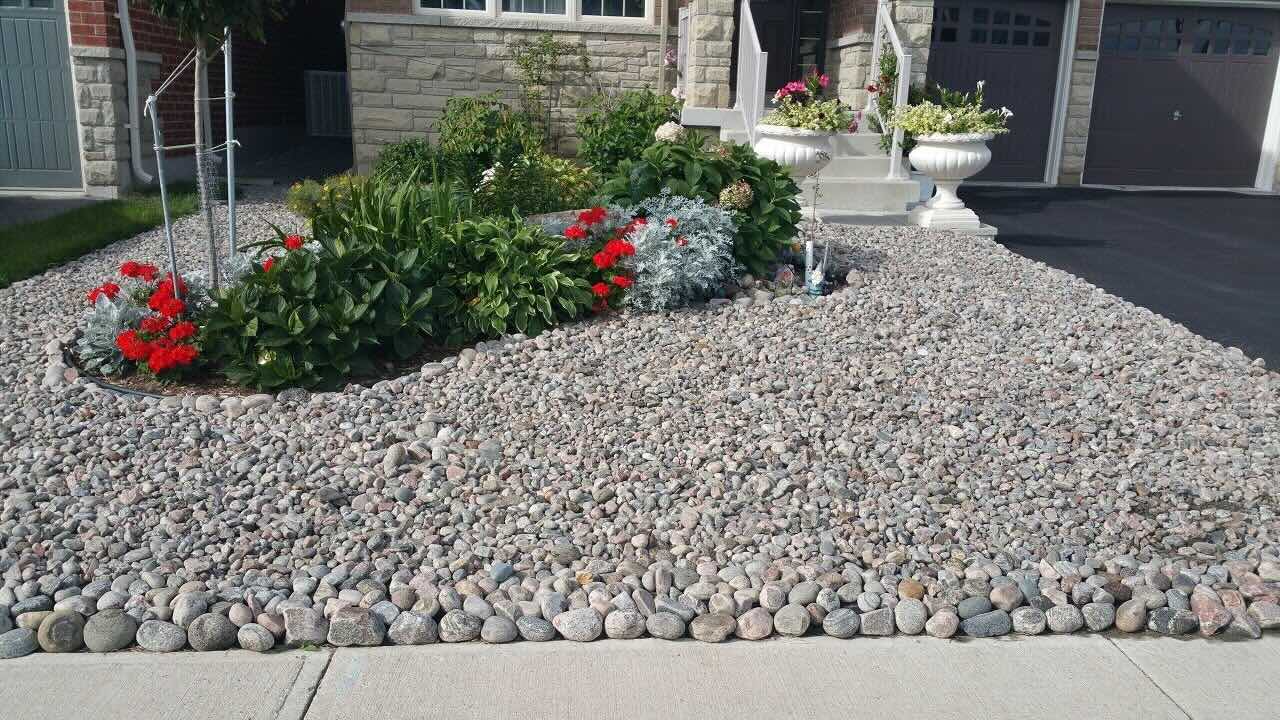


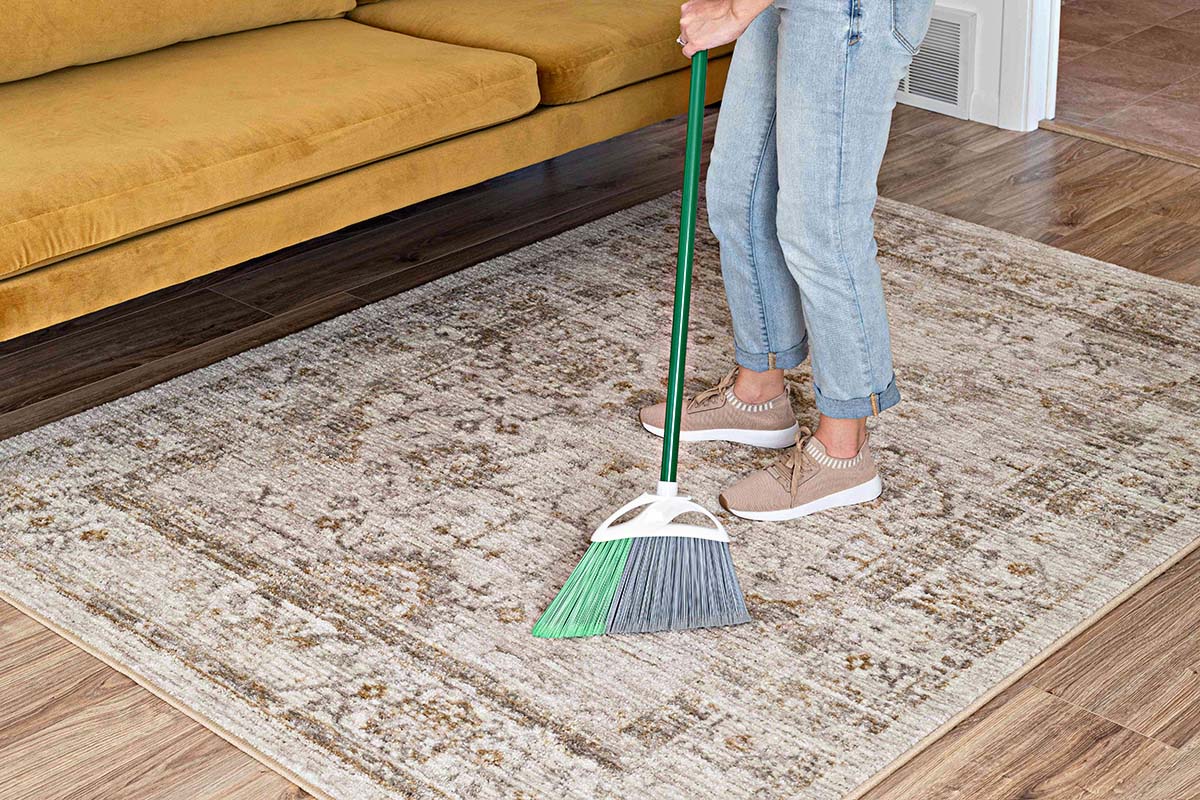




0 thoughts on “How To Get Rid Of Weeds In Landscaping”